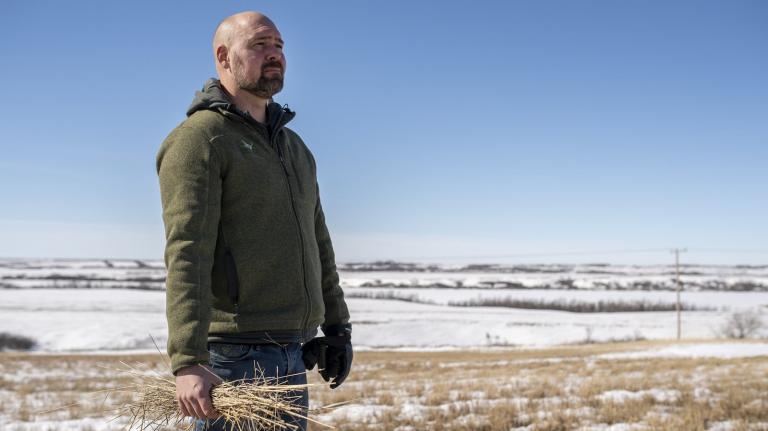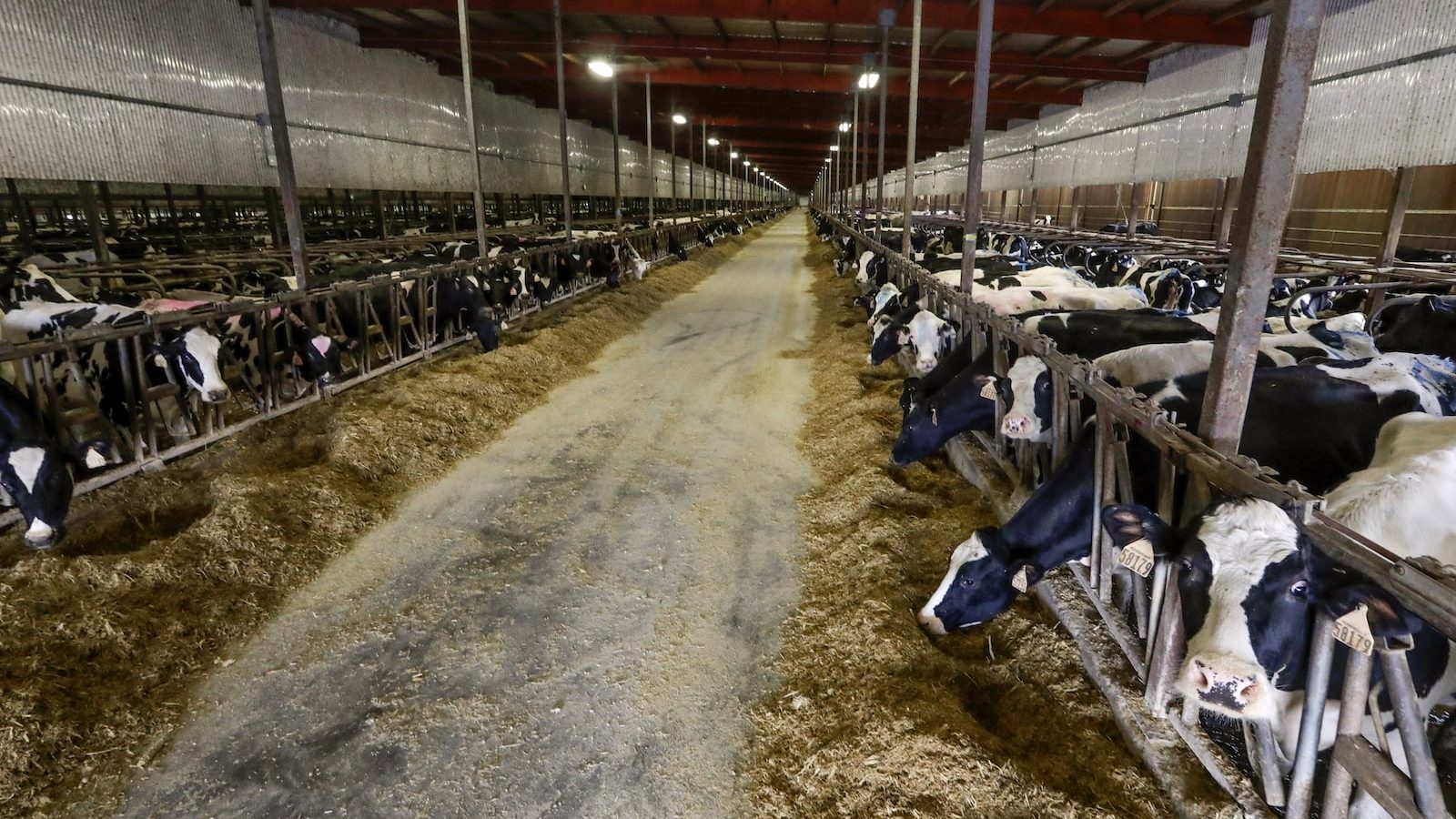The corn on Zack Smith’s 1,200 acres is not his future. Smith, a fifth-generation farmer working the land near Buffalo Center, Iowa, a town of almost 900 near the Minnesota border, knows the climate is changing and, in the future, it will be too hot and dry for a crop like corn.
Researchers predict that by 2053, a large swath of the Midwest will experience at least one day with temperatures of 125 degrees Fahrenheit or hotter. According to the First Street Foundation, a nonprofit climate change research group, Smith’s farm could one day be part of an “Extreme Heat Belt,” a region that would include Kansas, Missouri, Iowa, Indiana, Illinois, and Wisconsin.
Roughly the same region claims the name Corn Belt due to its output of corn, estimated at 10 billion bushels each year. These impending high temperatures will change the region’s economic and agricultural future, with growers already seeing drops in corn production this year. Changes to corn’s genetic makeup have increased its resilience to drought in recent years, but studies show that increasing heat is attacking soil conditions and, in turn, corn yield.
The future of Corn Belt and Midwest agriculture will get hotter and hotter, making each year more fragile and leaving farmers and growers adapting to extreme weather. Some states are even planting trees to protect livestock from the impending heat, which has been killing more and more animals each year. Farmers, growers, and scientists are now testing new grains, crops, and changes to land management to prepare for the impending wave of dangerous and destructive heat expected to accumulate in the middle of the country.
As the corn industry braces for these changes, Smith is putting his focus on the Stock Cropper, a technology he’s developing to shift away from corn production.
Simply, Stock Cropper is an animal pen that moves on its own. The autonomous, solar-powered, mobile barn moves animals through a pasture, allowing them to eat and fertilize along the way. The process of animals slowly moving forward along a strip of land helps the land retain nutrients, without the need to mow or use heavy machinery. Animals such as chickens, goats, lambs, or hogs are placed inside the roughly 24-foot-long pen that ranges from 10 to 30 feet wide.
“It’s putting animals back out on the land, but using technology to our benefit,” Smith said.
Smith grew up on a hog farm in Iowa but after massive industry-wide consolidation a few decades ago, his family started farming only corn and soybean. Since the early 1990s, Iowa’s pig population has increased by over 50 percent, but individual farms raising hogs dropped 80 percent. Livestock concentration has decimated individual farms and small communities across the Midwest, with farmers forced to either go big or get out.
After the hog bubble burst, Smith’s family found their land to be their most valuable asset and started farming more crops, just like other Iowan farmers. Iowa now produces the most corn of any state, and the United States is the global leader in corn production. Corn is used in myriad ways, from food sweetener to alcohol distillation. The nation’s massive corn export fuels both livestock and ethanol, which combined, account for 63 percent of the country’s agricultural exports.
Smith sees the future of corn production as fraught with drying soils and predicts a looming price drop for corn commodities. Current corn prices are higher than they have been in recent years with experts expecting this to last into the next few years, but growers are concerned that this year’s heatwave and drought have already damaged the corn yield, with an estimated one billion bushels less harvested in Iowa and Nebraska.
Smith said he also sees the nation’s shift away from a dependence on fossil fuels and ethanol as a losing battle for large corn producers in Iowa and he’s getting ready for life after ethanol. Right now, roughly half of the state’s corn production is used for ethanol.
“If that goes away, our model is going to look substantially different out here,” Smith said.
While the Stock Cropper technology is a small portion of Smith’s current operation, he said he wants to grow the technology to sell to other farmers. As corn becomes harder to raise, Smith imagines that a combination of selling the technology and the high-quality protein, those aforementioned hogs, and goats, in place of corn yields, will become his primary source of income.
Smith said he still wants to farm corn sustainably, both for the land and to combat future harsh conditions. Currently, Smith uses sustainable practices such as strip tillage, the process of cultivating the land with minimal disruption to the soil, and cover crops, planting vegetation that isn’t meant to be harvested to protect the soil from erosion and to improve conditions.
“Environmental and economic efficiencies are paramount on the farm and if you’re being environmentally efficient, you’re being economically efficient,” Smith said.
Corn, grains, and soybeans take up a large portion of the nation’s agricultural acreage and are annual crops. Each year, money is sunk into planting, growing, and harvesting these crops, only to do it all over the next year. To combat this cycle, a new grain is growing in portions of the Corn Belt.

Kernza is domesticated wheatgrass that grows perennially and can be harvested for 10 to 20 years after being planted. It is often used as a substitute for grains in bread and beer production. This perennial plant is cropping up across the pockets of the Corn Belt and Midwest, from Minnesota to Colorado.
Tim Crews, chief scientist at the Land Institute, a nonprofit agricultural research group in Salina, Kansas, said there are no silver bullets to make current crop systems adapt to impending, destructive heat. Crews is part of a larger effort to shift away from annual crops and plant more perennials like Kernza through the Perennial Agriculture Project, to make future crops more resilient to heat.
Kernza, and other perennials like legumes and oilseeds, a cousin to sunflowers, are more drought and heat-resilient because of their root structures. These crops have large root systems and can both store and pull water from deeper in the ground, as opposed to corn, which has a shorter root system. Crews said that hundreds of years of planting crops with small root systems have made soil that can’t retain a lot of water, causing agricultural runoff. This runoff has polluted rivers and lakes across the region, but in Minnesota, Kernza is already being planted to prevent future Mississippi River pollution. Crews said the Land Institute’s work hopes to fix years worth of disruptive practices to prepare for an intense future.
“We became annual agriculturalists that created an ecosystem that does not exist hardly anywhere else on the planet and one that is so radically disrupted on an annual basis,” Crews said.
Perennials are also better for the environment because they don’t need heavy, gas-powered equipment to operate every year, and also require far less yearly fertilizer and nitrogen. “It takes a heck of a lot of human work or fossil fuels to knock those ecosystems back to square one every single year,” Crews said.
But, Kernza and perennials aren’t without their challenges. These crops are in the early stages of domestication in the region and need years to develop and potentially replace crops like corn. Additionally, Kernza roots may trap more water than corn and soybeans, but they need more water throughout the year as their growing period is longer than an annual crop. Crews said long-lasting droughts, such as ones lasting nine months or more, will complicate these crops, but perennials can thrive in heavy and recurrent rainfall events.
“If you have a deluge every two months, you’re good to go, and the annual systems are not going to work,” Crews said.
The Land Institute is working on developing new perennial grains that are bred with commonly used annual grains to make the transition from annual to perennial easier across the board. The Kansas research organization has been testing perennial breeds of wheatgrass, rice, sorghum, legumes, and more. These perennial crops will take decades to become planted in fields across the region but will allow the Corn Belt to adapt to a warmer climate and perhaps hang up its corn-focused moniker.
“There are so many other potential new crop species out there that could be far more drought intensive or heat tolerant than even any of the ones we’re working on right now,” Crews said.





